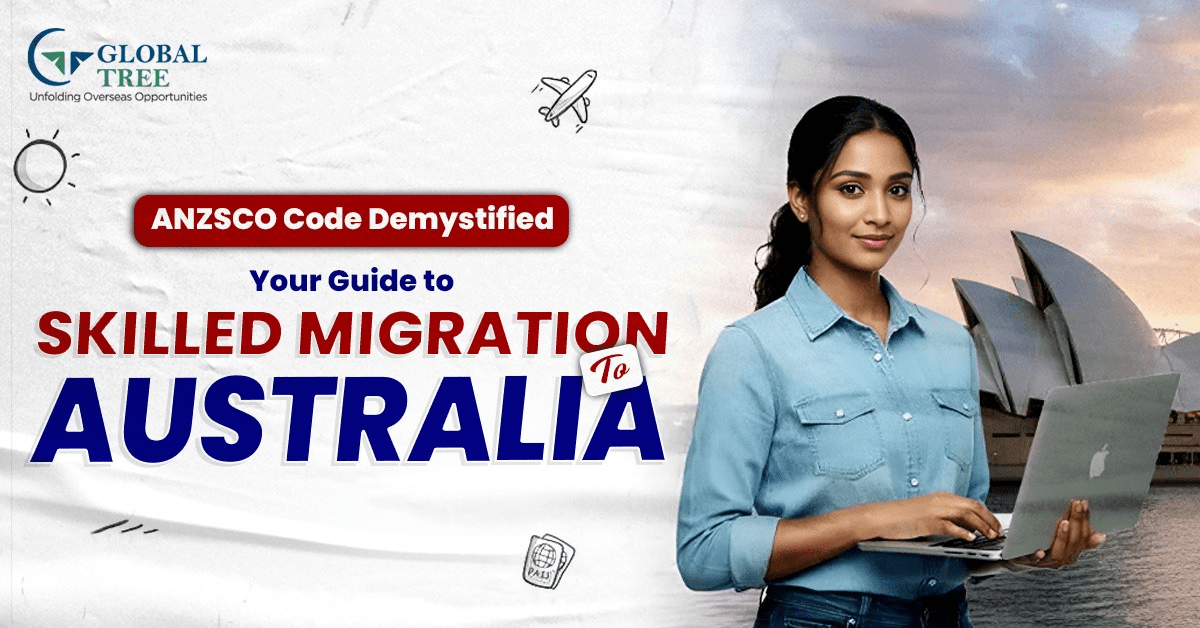How Indian Professionals Can Immigrate to Australia Without a Job Offer – A Complete Guide.

- Introduction
- How to Migrate to Australia Without a Job Offer?
- Option 1: Skilled Migration Program
- Option 2: Family Sponsorship
- Option 3: Study and Transition to Work
- Option 4: Regional Migration Programs
- Option 5: Investments and Business Migration
- Which Option Should I Choose to Move to Australia Without a Job Offer?
- Conclusion
Introduction
Australia is among the top places for those who want to make a change in their lives due to its excellent living standards, gorgeous scenery, and strong economy. The thing that makes it more attractive is the prospect of moving to Australia without a job offer from a company. Programs for skilled migration, such as visas for the Skilled Independent Visa, allow people to relocate to Australia according to their credentials and experience instead of relying on an offer from a prospective employer. It opens the door to skilled workers from all over the world to create a future in Australia that is more flexible and autonomous.
How to Migrate to Australia Without a Job Offer?
Australia provides a range of immigration options for those seeking to relocate with no employment provided. The options depend on the qualifications you have, your experience, or connections to your family. Below are some up-to-date and innovative ways to move:
- Option 1: Skilled Migration Program
- Option 2: Family Sponsorship
- Option 3: Study and Transition to Work
- Option 4: Regional Migration Programs
- Option 5: Business and Investment Migration
The conditions of each visa subclass differ, and you need to satisfy them before applying. In this article, you'll get an overview of the visa paths and prerequisites.
Option 1: Skilled Migration Program
The Skilled Migration Program is one of the more popular ways for people to immigrate to Australia without a job offer of employment. The program relies on your education, experiences, and abilities within occupations that are demanded in Australia. This program was designed to fill in any gaps in the Australian workforce with highly trained professionals.
1. Skilled Independent Visa (subclass 189):
Skilled Independent Visa (subclass 189) for Australia is a permanent, points-based visa that is available to qualified workers that a company or a family member does not support. Candidates must be experienced within a field that is listed in Australia's Skilled Occupation List (SOL). This Visa permits the applicant to work, live and learn anywhere within Australia. By the year 2025, Australia will give around 6,500 visas each year.
2. Skilled Nominated Visa (subclass 190):
Skilled Nominated Visa (subclass 190) is designed for workers with a high level of skill selected by a federal or territorial government. It allows you to reside while working in Australia as a permanent resident. It doesn't need an offer from a company. However, it requires the state or territory to nominate you. This Visa covers a variety of occupations but with an emphasis on those that require skilled workers. Around 6000 visas for these will be issued.
3. Skilled Work Regional (Provisional) Visa (subclass 491):
The Skilled Work Regional Visa (subclass 491) is a temporary visa for highly skilled individuals who wish to reside and work in the region of Australia. The applicant must be recommended by a territory or state government or be supported by a relative living in a region. In light of Australia's emphasis on expansion in the regional areas, approximately 9000 per year, these permits are offered each year.
4. Temporary Skill-Shortage Visa (subclass 482):
The Temporary Skill Shortage Visa (subclass 482) is a short-term work visa that is typically used for skilled professionals looking to be employed in Australia with a particular employer. Although this Visa requires the employer to sponsor it, it's still an ideal stepping stone for a professional who wants to acquire Australian experiences and work toward permanent residence.
5. Employer Nomination Scheme Visa (subclass 186):
Employer Nomination Scheme Visa (subclass 186) is a permanent residence visa that is granted to skilled workers through an Australian employer. This permanent residence visa for abroad nations needs a job invitation from the employer sponsoring it but permits skilled workers to avoid the standard job-search procedure. In 2025, Australia is planning to issue around 15,000 visas for these individuals, which will emphasize the importance of the support of employers to skilled workers.
Each subclass provides unique opportunities to professional professionals. They offer diverse ways towards Australian residence based on qualifications as well as experience. There are also the preferences of the region.
Option 2: Family Sponsorship
Family sponsorship is an excellent option for a way to move to Australia with no job since it permits individuals to receive sponsorship from close relatives who are Australian citizen permanent residents or eligible New Zealand citizens. This can be particularly beneficial to those who have family connections to Australia. Family members can help you to obtain various kinds of visas.
1. Partner Visa (subclass 820/801):
Partner Visa (subclass 820/801) permits individuals who are in a relationship with one Australian permanent resident, citizen or New Zealand citizen to migrate to Australia. This Visa can be divided into two parts: the subclass 820 temporary visa and a permanent visa of subclass 801. The process starts with obtaining a temporary visa, and applicants are able to later move on to permanent residence. The Visa does not require a work offer. Around 50,000 visas for partners are granted each year.
[Find Out More: Bringing Family Abroad? Your Guide to Dependent Visas]
2. Parent Visa (subclass Parent Visa (subclass)
Parent Visa (subclass 103) lets parents of Australian permanent residents, citizens or New Zealand citizens migrate to Australia. It's a long-term visa which allows parents to reside together with their children in Australia. The annual limit is set at 1,500 visas, which is in great demand. It is, therefore, essential to be prepared.
3. Child Visa (subclass 101):
The Child Visa (subclass 101) permits parents to take their kids to Australia, and they must be less than 18 years old and satisfy particular standards for character and health. The Visa provides the child with the right to permanent residence, but there is no requirement for a job for a child to be able to travel. The government grants around 55,000 visas per year for this type of Visa and focuses on encouraging the reunification of families.
4. Remaining Relative Visa (subclass 112):
The Remaining Relatives Visa (subclass subclass 115) is designed for those with no close family members who are not from Australia. An Australian close relative must sponsor candidates and are the sole remaining family member in their country of origin. The Visa permits individuals to become part of the family that they have within Australia and stay there for the rest of their lives. It is typical for the annual allocation to be about 2500 visas.
5. The Aged Dependent Relative Visa (subclass of 114):
This Aged Dependent Visa (subclass 114) is designed specifically for persons who depend financially on an Australian citizen, Permanent resident, or eligible New Zealand citizen. For those wondering how long you can stay in Australia with a visa, this particular visa allows relatives to remain for a significant duration. The applicant must prove their financial independence and meet physical and moral requirements. It is an option that is popular for those who wish to be able to stay with family within Australia.
Family sponsorship visas let you relocate to Australia without requiring any job offers but focusing more on family connections. These visas highlight the importance of reconnecting with family and friends, as well as keeping strong ties to your family within Australia.
Option 3: Study and Transition to Work
After you have completed your studies, you can transition into work and later seek permanent residence through the various pathways for skilled immigration. Australia provides a range of pathways that permit graduates to remain working and continue their studies, allowing an easy transition from school to working in Australia.
1. Graduate Work Visa (subclass 485)
The Visa permits students from abroad who have completed a program relevant to a profession in Australia's skilled Occupation List to stay for at least 18 months. This Visa gives them the chance to work while in Australia that can then be used for applying for permanent residency by skilled immigration.
2. A Temporary Graduate Visa (subclass 485: Post-Study stream)
Students who complete two years of study in Australia may qualify for this visa, an important option under the Study in Australia for Students initiative. The Visa permits graduates to live as well as work in Australia temporarily, usually during the course of up to four years. This allows them to acquire relevant experiences and then transition into permanent residence through skilled immigration routes.
3. Skilled Graduation Visa Recognized as a Graduate (subclass 476)
Subclass 476 visa is intended for engineers from universities that have the capacity. They can stay in Australia for a period of up to 18 months in order to acquire working experience in their area. The Visa could be an entry point to apply for skilled visas once they have gained the necessary work experience.
4. Students Visa (subclass 500) with Post-Graduation Route
The student Visa (subclass 500) allows students from abroad to reside or study and even be employed part-time in Australia after completing any eligible courses. Once they've completed their education and graduation, students are eligible to apply for a Graduate Work Visa or Post-Study Work Visa, which provides the opportunity to obtain working experience and permanent residency.
5. Regional Study Pathway
Learning in the regional regions of Australia provides additional benefits for immigration, which include state sponsorship of skilled migrants. Students who have completed their studies in the area could be eligible for a Regional Skilled Visa (subclass 491) or alternative regional pathways that lead to permanent residence following a period of work experience within those regions.
[Explore Now: How Indians Became Australia’s #1 Skilled Immigrant Group]
Option 4: Regional Migration Programs
Australia's Regional Migration Programs aim to attract skilled workers to be employed and live in the regions of regional cities, thereby addressing the issue of skill shortages in large cities. The programs provide pathways towards permanent residency for people who are willing to help contribute to the development of regional areas. When choosing a regional region, candidates can gain extra points and have a better chance of success during their journey to move.
1. Regions for Skilled Workers (Provisional) Visa (subclass 491):
Subclass 491 visa permits skilled workers to work and live within regional Australia for at least five years. The applicant must be recommended by a territory or state government or be sponsored by a suitable family member. The provisional Visa provides a path to permanent residence through subclass 191 after you have gained work experience.
2. Skills-based Regional Visa (subclass 887):
Subclass 887 visa permits those that have a provisional visa (like subclass 491 and 489) to seek permanent residence once they have been in the region of Australia for a minimum of two years. The Visa offers a simple route to permanent residence, encouraging the long-term establishment of areas.
3. Regional Sponsored Migration Scheme Visa (subclass 187):
A subclass of 187 visas is a permanent choice of residency for qualified workers being recommended through an Australian employer who is located in the region. This visa allows workers to stay and work in regional Australia with a valid job offer, especially in sectors linked to the highest paying occupations Australia lists. This is an excellent visa for people looking to relocate to areas outside of major cities with the goal of the need to fill regional skills gaps.
4. Designated Area Migration Agreement (DAMA):
An HTML0 Designated Area Migratory Agreement (DAMA) can be described as a labour contract that is signed between the Australian region and the government or employers in particular. Employers can sponsor skilled and semi-skilled labourers to fill local labour shortages. DAMA provides greater flexibility by allowing for custom conditions in accordance with the demands of particular areas.
5. Employer Nomination Scheme (subclass 186) Regional Stream:
Subclass 186, Employer Nomination Scheme visa that falls under the regional stream permits skilled employees nominated by employers within a region to seek permanent residence. This route offers opportunities to individuals who have acquired work experiences in regional Australia, which can eventually lead to permanent residence after meeting certain conditions.
Option 5: Investments and Business Migration
Australia provides a variety of options for those looking to relocate through business or investment opportunities. This Business and Investment Migration program is designed specifically for investors, entrepreneurs, and business owners who want to be a part of the Australian economy through establishing or growing their businesses within Australia. The visas offer a path to permanent residency while also fostering the growth of jobs and economic development.
1. Business Innovation and Investment Visa (subclass 188):
The subclass of 188 visas is a temporary visa designed for entrepreneurs, business owners entrepreneurs, investors and others looking to start or expand their businesses in Australia. There are several streams available, including the Business Innovation Stream, Investor Stream as well and Entrepreneur Stream. The Visa permits individuals to reside in Australia for upto five years. They also have the opportunity to move to permanent residence with an annexe 888 subclass visa.
[Learn More: Dreaming of Australia After 12th? Here’s How to Get There!]
2. The Business Talent Visa (subclass 132):
Subclasses 132 and 133, business talent visa is intended for top-performing entrepreneurs and business owners who wish to run businesses within Australia. The applicants must be approved by the state or territory government. This Visa, which is permanent, provides an opportunity for people who have the potential to make significant economic contributions, for example, creating or expanding businesses that generate jobs and boost the growth of Australia's economy.
3. Investor Visa (subclass 891):
Subclass 891 Investor Visa permits those who are holders of a provisional subclass 188 visa in the Investor Stream to be eligible for permanent residency. The applicant must have kept the investment they made in Australia as well as meet the requirements for financial support. This Visa is intended to attract high-net-worth individuals to make investments in Australian companies, which helps improve the nation's economic growth.
4. Important Investor Visa (subclass of 188 - Investor stream):
The Important Investor Visa (subclass 188 - Investor Stream) is designed towards those who are willing to invest a minimum of five million dollars in approved investments within Australia. The Visa provides a path to permanent residency following a specific period of time in investments. This Visa is designed for investors who want to make a significant contribution to the economy of Australia and increase their portfolio of assets within Australia.
5. Premium Investor Visa (subclass 188 - Premium Stream):
The Premium Investor Visa (subclass 188 Premium Stream) explicitly targets individuals with high net worth who can make a substantial economic contribution to the economy of Australia. Candidates must make a minimum of AUD 15 million into Australian securities, such as bond issues from the government or in other eligible areas. The Visa is intended for individuals who are looking to create an impact on the economy and obtain a speedy pathway to permanent residence.
[Discover More: Planning to Study in Australia? Know the Costs First!]
Which Option Should I Choose to Move to Australia Without a Job Offer?
Moving to Australia with no job offer is possible, but it's dependent on your qualifications as well as your background and situation. If you're a professional, a student, an individual with a family connection or an entrepreneur, Australia has a variety of pathways to meet the needs of different individuals. It's essential to select an option that is in line with your skills and long-term ambitions. Explore your options, learn about what you need and then plan your relocation route carefully so that you can make sure that your transition is smooth and your settlement in Australia is efficient.
Conclusion
Indian professionals have several ways to move to Australia without the need for a job. Through options such as the Skilled Migration Program, family sponsorship, or even studying in the meantime and then working, people can obtain the right to reside based on their qualifications or their relatives' qualifications. Through careful planning and a thorough understanding of the various visa options, Indian professionals can successfully relocate to Australia and create a bright future for themselves in Australia.









